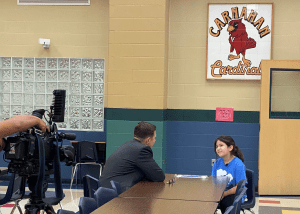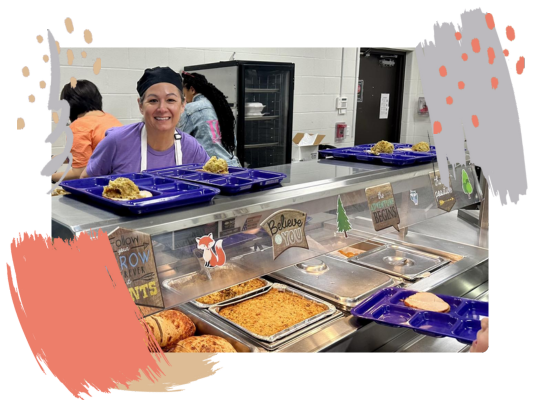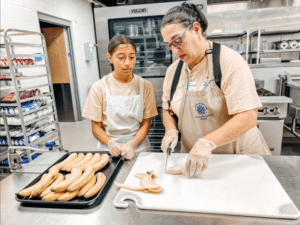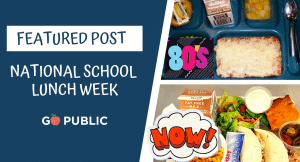
NISD Hosts Anchorman Chancellor
Just before School Lunch Week (Oct.9-Oct.13), Northside ISD Child Nutrition Services and Carnahan Elementary School hosted News4 anchorman David Chancellor for a story on the

* Campaign (Go Public)

Find Texas Schools and Independent School Districts

Cleveland ISD’s Child Nutrition department gave students at Southside a tastetest.
Our public school districts provide every student with access to nutritious school meals. Federal school lunch programs like the National School Lunch Program administer free and low-cost lunches to over 30 million children each day. The School Breakfast Program feeds breakfast to over 10 million students each morning! The US Department of Agriculture administers free school lunch programs for students and families.
To ensure food security outside of the school day, some families also receive SNAP benefits. The Supplemental Nutrition Assistance Program (SNAP) is a federal nutrition assistance program. SNAP provides benefits via an Electronic Benefits Transfer card. The SNAP EBT card is used as a debit card to purchase SNAP-eligible food in authorized stores.

The Angelton ISD nutrition department created and served special holiday meals for students.
Schools follow the USDA Dietary Guidelines for Americans for meals, beverages, and snacks that are served or sold in public schools. School nutrition departments follow food safety and nutrition guidelines. Public school lunch programs work hard to provide nourishing, appealing, and delicious meals. However, charter schools and other education programs are not required to follow the same guidelines.
In 2012, the Hunger-Free Kids Act allowed the USDA to make school lunch reforms. Child nutrition departments are required to include more vegetables, fruits, and whole grains while decreasing the amounts of trans fats and sodium. (Center for Science in the Public Interest- School Meals).
Participation in school meals includes several benefits for children as many students receive the majority of their meals from school. Children who eat breakfast at school are shown to visit the school nurse less often and have better attention spans. A balanced diet improves a child’s all-around health. The CDC states that a poor diet increases the chance of obesity and possibly impede brain growth. (K12 Academics Article)

Just before School Lunch Week (Oct.9-Oct.13), Northside ISD Child Nutrition Services and Carnahan Elementary School hosted News4 anchorman David Chancellor for a story on the

North East ISD student, Jennifer Martins, helps with NEISD summer meals and shares her story. Jennifer Martins remembers going through the lunch line at Garner

Angleton ISD received a $6,991.13 grant from the National Food Group, helping clear the school lunch debt at Angleton High School and Angleton Junior High.

Honoring Our Public School Lunch Heroes Public school nutrition and cafeteria staff provide essential services to our students every day. On School Lunch Hero Day,

Districts Observe the Importance of National School Breakfast Week National School Breakfast Week reminds us of the value of nutritious school breakfasts. The federal School

Local Cy-Fair Business Supports National School Lunch Program Cypress-Fairbanks ISD is fortunate to have a local business meeting the pizza needs of the district. Alpha

School breakfast provides academic, wellness, and behavioral benefits to students.

-by Trina Pruitt, parent and Go Public contributor I love cooking for my family. It is therapeutic for me to read cookbooks and experiment with
© Copyright 2023 – We Go Public – All Rights Reserved

If you want to take advantage of this benefit or learn more about how a membership can help your organization please click the button below.